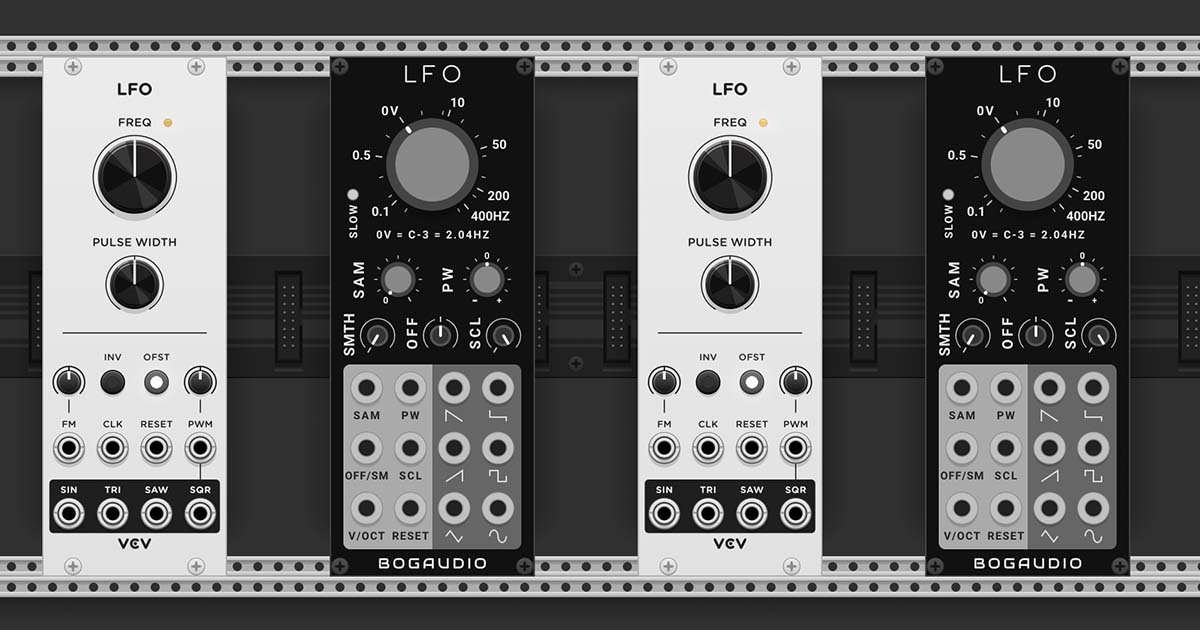When you delve into the world of synthesis, the term ‘LFO’ frequently surfaces. It might seem like technical jargon, but in essence, it’s a tool that breathes life into your sounds. Have you ever listened to a track and wondered how the producer achieved those evolving textures? That’s often the magic of the Low-Frequency Oscillator, or LFO for short.
Especially since techno is a very repetitive genre small changes and movement are essential to keep it interesting. So let’s uncover the power and versatility of the LFO.
Basics of LFO: Breaking Down the Acronym
For many budding producers and synthesizer enthusiasts, encountering the term ‘LFO’ can be both intriguing and baffling. If you’ve been fiddling with your DAW or your synth’s panel and have wondered about this acronym, you’re in the right place. Let’s break it down:
- Low – Unlike your typical oscillators that produce sound waves we hear, LFO operates in the background, silently, at a subsonic range. This means it’s functioning at a pace slower than what our ears can perceive as sound.
- Frequency – At its heart, frequency pertains to speed. Though LFOs run at a steady, predefined frequency, the flexibility lies in your ability to adjust this pace, allowing you to control how rapidly or slowly it modulates your sound parameters.
- Oscillator – In the world of synths, oscillators are foundational, creating the very sound waves we listen to. Yet, when we shift our focus to the LFO, they don’t directly create the sound. Instead, they serve as a modulation source as they oscillate at inaudible frequencies. This movement can be used to subtly influence and shape various elements of the sound, adding depth, and dynamism.
In simpler words, consider the LFO as a puppeteer, subtly pulling the strings behind the curtain. By adjusting and modulating parameters, it breathes life into static sounds, adding movement and texture without you having to laboriously do so manually.
The Functionality of LFOs
Imagine an invisible hand that never tires, continuously tweaking and adjusting the controls on your synthesizer. This is essentially the role of an LFO, or Low Frequency Oscillator. While you might not directly hear it in action, its effects are evident, sculpting the motion and dynamic feel of your sound.
How Does a LFO Operate?
Modulation: LFO operates on a principle called modulation. In simple terms, modulation is the act of varying a sound’s property over time using a dedicated control signal. Think of it as giving your sound a rhythmic push, akin to pushing a child on a swing — ensuring that there’s a continuous, dynamic movement.
Using LFOs, you can automate specific parameters of your sound, eliminating the static, unchanging quality and replacing it with a lively, evolving texture. Whether it’s making a sound pulsate in rhythm or giving it a wobbling effect, LFOs are your go-to tool.
Implementation: In the realm of digital synthesis, employing an LFO is quite straightforward. You ‘assign’ or ‘route’ the LFO to influence specific parameters of your synthesizer or sound module. Commonly affected parameters include pitch, volume, and filter cutoff, but the possibilities are vast.
Waveforms of LFO: Those oscillating, wavy lines you often see? They represent the LFO’s waveforms. These waveforms dictate the manner in which the LFO will modify your sound. Some prevalent waveforms are:
- Sine: Produces smooth, cyclical changes.
- Sawtooth: Creates a ramping effect, either upwards or downwards.
- Square: Imparts an on/off or pulsating modulation.
- Random: Introduces an unpredictable or ‘noisy’ modulation, reminiscent of white noise.
By understanding and manipulating LFOs, you have the power to inject vitality, movement, and intrigue into your sonic creations. It’s like having a dedicated sculptor, meticulously shaping and molding your sound into a dynamic masterpiece.
Practical Applications of LFOs in Sound Design
This is where the fun starts. LFOs are like the Swiss Army knife of synthesis, offering a myriad of ways to shape and craft your sound.
- Vibrato: By applying an LFO to modulate pitch, you get this wavy, shimmering effect.
- Tremolo: This is what happens when you modulate the volume with an LFO. The result? A pulsating rhythm, giving your track that heartbeat effect.
- Filter Sweeps: If you’ve ever wondered how producers get those evolving, atmospheric vibes in their tracks, this is it. Modulating a filter cutoff with an LFO is a absolute classic and can create soundscapes that take your listeners on a journey
- Sample offset: when using a sampler a simple way to bring some interest in the sound is to slightly modulate the startpoint of the sample. So that with every hit it changes timbres, giving it a more ‘human feel’
LFOs Beyond Synthesis
LFOs have wormed their way into a variety of effects, subtly changing and shaping sounds in ways that might surprise you:
- Phasers, Flangers, and Chorus: Ever wondered how that trippy, spacey sound in some tracks is achieved? Look no further than these effects, all of which often employ LFOs to modulate delay times or phase positions.
- Rhythmic Gating Effects: By modulating volume or filters with an LFO in a rhythmic pattern, you create those gated, stuttering effects, kind of like a sidechain, that for example can transform a boring pad into a rhythmic element.
- Dry/wet parameter: you can get quite interesting results automation dry wet parameters of literally any effects with an LFO.
- Cross modulation and layering LFO’s: Why stop at one? Sometimes, using multiple LFOs, each at different rates or assigned to different parameters, can create complex and evolving textures. Also Cross Modulating LFO’s with each other can create unique waveforms and shapes adding an extra layer of complexity to play with.
..these examples only scratch the surface, as there are no creative limits in modern DAWS to where LFOs can be applied.
Examples: LFOs in Action
Here I wanted to show you two recent noteworthy tracks where the use of LFOs plays a pivotal role in shaping the characteristic of a track:
Ricardo Garduno – Feeding The Apathy (Oscar Mulero Remix)
Oscar Mulero, an absolute wizard of soundscaping and texture creation, consistently crafts masterpieces, each brimming with intricate modulation. I’ve selected this particular track to emphasize a distinctive aspect: throughout the entire composition, it’s clear that the primary sequence undergoes modulation via the filter cutoff. While there is a lot more going on, such as movement within the stereo field, I believe the effect of the LFO on the filter cutoff is a noteworthy highlight.
Border One – Coplanar
In this example from Border One, the modulation of the filter cutoff on the background pad stands out as the central element of the track, giving it a distinct and characteristic vibe throughout the whole track. But here as well there is more going on with some modulation in the stereo field for example.
Additional Resources
For a hands-on demonstration of applying LFOs in Ableton Live, check out this informative YouTube video It’s a great visual guide to see LFOs in action and discover their versatile applications in sound design as well as some insights into cross-modulation.
Conclusion
I hope that I could shine some light on this mystic term LFO. As I tried to demonstrate through these examples, it’s not about the quantity of gear or the price of your plugins; it’s about your creative application. The LFO serves as a prime example of this principle, transforming basic sounds into sonic masterpieces – Just be creative and try to push boundaries! That’s what techno is all about.







